
Discovery of the M31 [OIII] emission arc
Recently, a major discovery by an international team of amateur astronomers and scientists has become a huge online hit, and this new discovery is just located in one of the
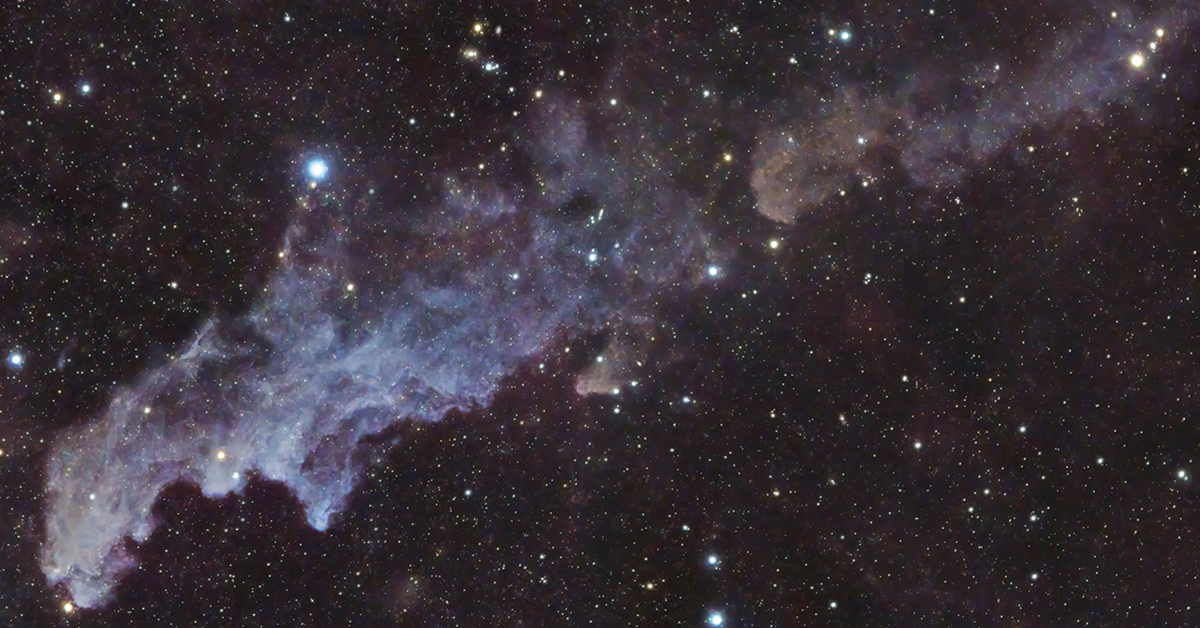
TM: My name is Timothy Martin. I currently live in Dallas, Texas. I have a Bachelor’s degree in computer information systems and a Master’s degree in mathematics. I’ve worked in information technology for 43 years, the last 30 years in healthcare information technology. In 2007, I left my job to attend law school and in 2011, I graduated SMU Dedman School of Law with Juris Doctor and Master of Laws degrees. I passed the bar a few months later, and since that time, I have worked as General Counsel for a healthcare information technology company. I will be retiring in a couple of months, which will enable me to spend more time on astrophotography. I’ve been married for 37 years to Christi, have one daughter who lives with her fiancée in Seattle, and I have two cats, Stella and Seymour, who both love it when I take the telescopes out. The cats enjoy supervising all our astronomical activities.
NP: Hello there, I’m Nic Patridge. I also live in the Dallas area where I enjoy my life with my wife, daughter, and 2 dogs (Chalupa & Margarita). I also work in healthcare data by day, leading a team of developers and analysts. This is my second career, and I spent the first one in graphic design for about a decade and a half. Texas life has been a wild ride over the past year, as you can imagine, but I did recently manage to buy a house and move in during all the craziness. Wish us luck as our daughter starts high school next year!
TM: Nic and I have known each other for several years and have hung out together quite a bit. I was interested in astronomy from a young age—triggered by seeing a picture of Messier 104 taken by the 200” Hale Telescope at Mount Palomar in the early 1960s. Nic has long had an interest in sky photography taking landscape, cloud formation, and sunset pictures. But I first realized astronomy was in reach for someone like me by seeing Trevor Jones on YouTube with his Astrobackyard channel. He recommended starting out with an Apertura Dobsonian reflector. So in January 2020 I bought one. From the first time I held my phone to the eyepiece and took a picture of the moon, I knew I’d be getting involved in astrophotography. From there, I really just watched both Trevor and Dylan O’Donnell and started following their advice.

TM: My first astrophotography image. The moon in daylight taken with my iPhone through the eyepiece of the 12” Dobsonian. Taken in January 2020.
NP: There is nothing quite like seeing a phenomenon with our own eyes for the first time. My first brush with astronomy first-hand was in Tim’s back yard when he set up his new Newtonian telescope. It’s one thing to see pictures and paintings of incredible things, but seeing it for yourself is an entirely different experience. Tim introduced me to Jupiter & Saturn that night, and I was immediately hooked on astronomy. As Tim mentioned, I’ve been fixated on and photographing the day sky for several years now, so this was a natural transition for me. The fact that I am as entrenched and capable as I am now is a testament to Tim’s willingness to share this journey with me.




A first foray with real astrophotography:

Our first deep-sky image. Taken with Daddy Scope using a Canon M50 DSLR: M13. We were thrilled just to get it into the frame and take a single exposure of it.

A little more advanced image of M13 taken in September 2020 with Daddy Scope and the ASI2400MC Pro using N.I.N.A., guiding with PHD2, and three hours’ worth of sub exposures.
We have two setups we use for astrophotography. The first package, in excruciating detail, is:
The second package, for wide angles, is:
We also have a spare ASI294MC Pro as a backup. So we have seven ASI cameras: (1) ASI2400MC Pro, (2) ASI2600MC Pro, (3) ASI294MC Pro #1, (4) ASI294MC Pro #2, (5) ASI224MC, (5) ASI174MM Mini, and (7) ASI290MM Mini.
Early on, we struggled with what to call these various configurations, so we relied on a childhood fairy tail to come up with names—the Three Bears. We refer to the 11” Celestron as “Daddy Scope.” When using the GuideStar 61 mounted on Daddy Scope to take a wide angle of the main target, we refer to that as “Mama Scope.” And the ZenithStar 61/iOptron combination we refer to as “Baby Scope.” We sometimes refer to the guidescope mounted on Baby Scope as “Puppy Scope.”

Dark-sky trip to Big Bend in November 2020.

The C11—Daddy Scope (with Mama Scope)—out by the pool in the backyard.

The small scope—Baby Scope—in the backyard.
Some representative shots:

A 12-panel mosaic shot with Baby Scope and the ASI294MC Pro over nine nights in December 2020. It capped a study of nine images focusing on the Heart & Soul nebulas.

A closeup of Melotte 15 in the Heart Nebula shot with Daddy Scope and the ASI2400MC Pro.

The Jellyfish Nebula shot with Baby Scope and the ASI2600MC Pro—the first meaningful image we used that camera for.
TM: We packed up the truck with Daddy Scope, Mama Scope, and Baby Scope, drove 7 hours to Palo Duro Canyon in a Bortle 2/3 zone, and set up in a horse pasture about 100’ from the cabin we were staying in. At the time, it was still getting below freezing at night there. But we were armed with warm clothing and plenty of dew heaters.
Because it was so late in the season for the Orion constellation, we would only be able to get two hours per night, with three nights scheduled, on the Witch’s Head target. Because it would require us to shoot a two-panel mosaic with Baby Scope, we were only able to get one hour per night. So we got one hour per panel per night—with no filter—over three nights for a total integration time of six hours.
NP: Here is a small note about equipment management. Each new setting you choose for shooting will reveal an opportunity to get better. This trip made us realize we needed simple things like a 100’ ethernet cable, a 100’ extension cord, a specific new dew heater. Simple things can cost you regrettable hours spent on troubleshooting that you’d rather spend shooting.
TM: It’s a target we’ve long wanted to shoot, but the Bortle 8/9 skies of Dallas really don’t allow it. So this dark-sky trip was really a good, last opportunity to get it this year. And the recent purchase of the ASI2600MC Pro paired with the Z61 really made it a good match for us because we could frame it in two panels and take advantage of the deep well and extraordinary resolution of the 2600. The only suggestion we can offer is to find a dark sky to shoot this in—and do it before March so you can get plenty of time with it.

TM: Holy cow! It was hard! From backfocus to calibration frames to guiding, there were so many things to learn. The ZWO ASI Cameras group on Facebook was a great resource, the CloudyNights forum was another, and videos from people like Trevor Jones, Dylan O’Donnell, and Shawn Nielsen were a huge help.
NP: We just really loved doing it and really loved the results. That kept us going.

The Antennae Galaxies shot on the dark-sky trip to Palo Duro Canyon with Daddy Scope and the ASI2400MC Pro.
NP & TM: Savoring and enjoying the time spent doing it. The destination is not so important as the journey. (But the destination is still very cool.)

The Whale and Hockey Stick galaxies shot with Daddy Scope using the ASI2400MC Pro and the 0.7x Celestron reducer.
TM & NP: Generously.
TM: My wife is an artist. I support her artistic endeavors without reservation. She supports mine. We “buy each other’s chairs.”
NP: My family has been drawn in by astrophotography, too. Immediate and extended family have expressed their appreciation and curiosity for it. We also share our images on local community social media pages and get a warm response. Who wouldn’t love this?

TM: My wife loves this shot of the Leo Triplet taken in our backyard with Daddy Scope, the ASI2400MC Pro and the Celestron 0.7x reducer.
TM: We haven’t been doing it for two years yet, but for me, in the last year, it’s added purpose and meaning to my life in ways I didn’t think possible—not in terms just of the joy of seeing and photographing these amazing objects, but also in sharing these images with family and friends. They had seen pictures of a nebula or two and a galaxy or two. But the awe they express when they see something for the first time like the Witch’s Head, Jellyfish, or Rosette Nebula, or the Triangulum, Leo Triplet, or Virgo Cluster is priceless. I see it kindle a new interest and understanding in them that they didn’t have before.

The Flaming Skull/Teddy Bear nebula shot with Baby Scope in a two-panel mosaic using the ASI294MC Pro on a dark-sky trip to Big Bend Ranch State Park in November 2020.
TM: Trevor Jones’ videos introduced me to ZWO. But Dr. Robin Glover’s lectures impressed on me the importance of using dedicated astrophotography cameras with cooling that minimizes the read noise rather than trying to use a DSLR. My first ZWO camera was an ASI294MC Pro—one that we still employ from time to time on Mama Scope.
TM: Very much so. It has exceeded my expectations. And it’s absolutely a perfect match for the Z61 and for the C11 in HyperStar mode. I intend to give it a try at full focal length on the C11 in June when the 10Micron GM1000 mount I’ve ordered arrives.
TM & NP: One suggestion would be to allow the drivers to support more than two main cameras more reliably. We’ve had trouble using the 2400 on Daddy, the 2600 on Baby, and the 294 on Mama at the same time with one control computer. A driver update would save us the expense and trouble of purchasing a second Intel NUC to control the two scopes separately. Another thing that would be really helpful would be the filter drawer storage box ZWO has alluded to. It would be nice to have extra filter holders that could be stored in a safe box to facilitate easy switching of filters. Because we interchange OSC filters on multiple scopes, a filter wheel doesn’t help us.

NGC 1333 shot without filters using the ASI2400MC Pro on Daddy Scope at Big Bend Ranch State Park in November 2020.
TM & NP: Yes. We’ve joined the Astronomical League and are pursing the Messier Observing Program. That will require us each to separately, and without help from each other or any computers, goto functions, or online apps, to visually observe and document each of the 110 Messier objects. We have been using the Apertura Dobsonian and some excellent Tele Vue eyepieces to work on that.

Messier 81 shot from our back yard with Daddy Scope, the ASI2400MC Pro, and an Optolong L-Pro filter.
TM & NP: We’re currently working on an 18-panel mosaic of the Virgo galaxy cluster with Baby Scope. At the same time, we’re shooting the interesting galaxies in that cluster up close with Daddy Scope. The result will be a detailed study of the cluster. We’re also very much looking forward to shooting many emission nebulas we’ve not had the opportunity to shoot such as the Eagle Nebula, the Trifid Nebula, and others. But for the long term, one of our goals will be to revisit targets we’ve imaged and try to improve on prior efforts. Anticipating the possibility of being able to accomplish unguided imaging with the coming 10Micron mount, we may also start to learn the processes for mono imaging, although we still have much to learn and accomplish with the color cameras we have.

Messier 88, in the Virgo galaxy cluster, shot with Daddy Scope, the ASI2400MC Pro, and an Optolong L-Pro filter.

Recently, a major discovery by an international team of amateur astronomers and scientists has become a huge online hit, and this new discovery is just located in one of the
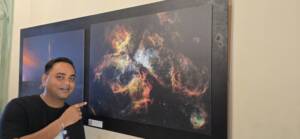
Taranjot Singh, an Indian origin Australian astrophotographer who is making waves on the international stage. Taranjot has been recognized as one of the Top 5 finalists in the prestigious Siena
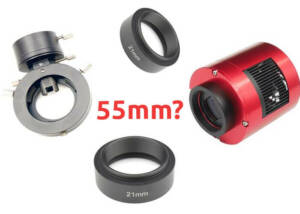
The back focal length is advised by telescope manufacturers. Since most telescopes have a 55mm back focal length, we are here to provide detailed instructions for all ASI cooled cameras.Please
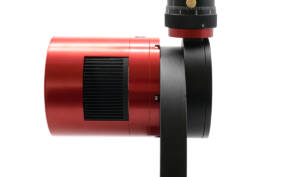
How to connect ASI6200MM Pro to 2″ EFW/M54 filter drawer and OAG-L? How many solutions are there for ASI6200MM Pro to get 55mm back focus length? If you are still
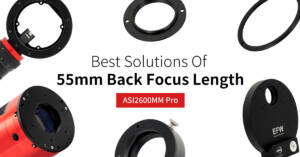
People are asking the connect methods of ASI2600MM Pro: How to use it with the new 36mm EFW? How to reach the 55mm back focus distance? What accessories I need
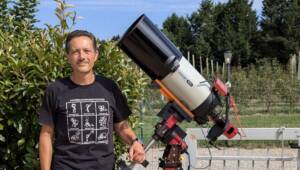
Hello Andrea Arbizzi,thanks for accepting our interview invitation. Congratulations on winning the ASIWEEK competition in week#42/2024! Q1: At first, congratulation that your nice image won #ASIWEEK. Can you introduce yourself